Help, My Google Maps are Broken!
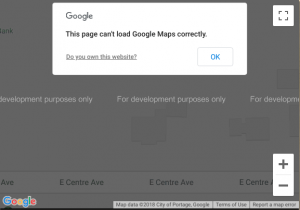 Do you own a web site with an embedded Google Map? You may want to give it a look and make sure it’s still working correctly. Beginning on June 11, 2018, Google started requiring all websites to have a unique “API Key” and billing information on file in order to use their mapping service. This was not immediately apparent, but recently Google has started enforcing its new policy, resulting in an epidemic of broken maps littered across the web.
Do you own a web site with an embedded Google Map? You may want to give it a look and make sure it’s still working correctly. Beginning on June 11, 2018, Google started requiring all websites to have a unique “API Key” and billing information on file in order to use their mapping service. This was not immediately apparent, but recently Google has started enforcing its new policy, resulting in an epidemic of broken maps littered across the web.
It’s Not Free Anymore?
For most websites, it actually does remain effectively free – for now. Google’s new Map pricing structure grants up to $200 worth of free usage per month, per website. This is the equivalent of around 28,000 dynamic map loads. Keep in mind that advanced features such as turn-by-turn directions count as multiple loads. As such, highly interactive embedded maps may use more loads than you might expect. Still, unless the free threshold changes drastically, this new policy will only affect high-volume websites.
How Do I Fix It?
First, you will need a Google Cloud account (or enable Google Cloud in your existing Google account). Once in, you will need to create a new “Project” for your website and then follow the steps to set up Billing. Yes, you will need a credit or debit card on file with Google, even if it is never charged. Once billing is set up, Google will issue you an API key to use in your new Project. Be sure to protect this key.
Once you have your API key, integrating it into your map is the next step. This process will vary greatly depending on your specific situation. Some people use embedded maps as part of a plugin – in which case the key would be entered somewhere into the plugin’s settings. Others might need to enter it into their theme or content management system. For custom maps, the help of a developer may be required. Whatever your case may be, Appletree MediaWorks has the experience to get you on the right track – don’t hesitate to drop us a line if you’re stuck.
An Easier Way
If all you need is a simple area map with a single marked point – the most common sort of map found on Contact Us pages – you’re in luck! Even with Google’s new cost structure, it is still possible to use a simple “iframe”-based map completely free of charge and without an API key.
Simply point your browser at Google Maps and locate your business or point of interest. Click on the map where you want to add the flag. If your business is registered in Google Maps, you will be able to highlight it directly. When the side navigation pops up, use the Menu to select “Share or embed map”. From there, click “Embed a map” and copy the HTML it generates. This snippet of code can be placed anywhere you’d like the map to appear.
How the Internet Helps in a Crisis
Everyone has heard about the recent Paris Attacks on November 13th. Many people have found that the Internet helps in a crisis. The Internet can help to coordinate relief efforts while providing essential communication services to the unfortunate individuals involved in a disaster.
Google Crisis
![]() Google has created some powerful tools to help save the day in times of crisis.
Google has created some powerful tools to help save the day in times of crisis.
Crisis Response – Because Google’s crisis response team analyzes each crisis, each response may be slightly different.
A specific response may include:
- Creating a Resource Page – This is a simple web page containing the most relevant emergency information and tools available for a given crisis.
- Launching Google Person Finder – This is an application which connects friends and loved ones following a disaster. This is useful when there is a large number of missing people and traditional communication lines are unavailable.
- How it works: Google’s Person Finder page lists current disasters. Click on a disaster and you can then choose from either “I’m looking for someone” or “I have information about someone”.

- How it works: Google’s Person Finder page lists current disasters. Click on a disaster and you can then choose from either “I’m looking for someone” or “I have information about someone”.
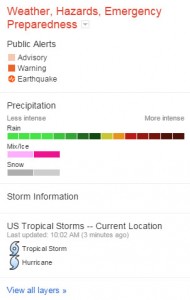 Hosting a Crisis Map – This is a map that displays information concerning the disaster such as storm paths, flood zones, evacuation routes, shelter locations, and power outages. This includes official content and user-generated content.
Hosting a Crisis Map – This is a map that displays information concerning the disaster such as storm paths, flood zones, evacuation routes, shelter locations, and power outages. This includes official content and user-generated content.
Tools For Responders – Do you think your organization may be able to help in a disaster? Google also provides some tools for responders.
- Google Public Alerts – An organization can send emergency alerts if they are relevant to an ongoing crisis. These alerts will appear on Google’s search results, maps, and android devices (using Google Now).
- Person Finder – This can be embedded into your company’s website.
- Crisis Map – This can be embedded in your company’s website.
- Other Google Tools – Docs, spreadsheets, and Earth are all useful tools for responders.
Facebook Safety Check Tool
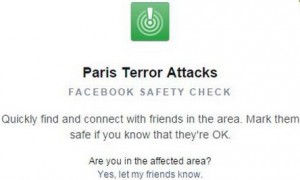 The Facebook Safety Check Tool was originally created for natural disasters. After the Paris Attacks, it has opened up to man made disasters as well. Basically, the Safety Check tool notifies friends and loved ones that you’re safe during a disaster.
The Facebook Safety Check Tool was originally created for natural disasters. After the Paris Attacks, it has opened up to man made disasters as well. Basically, the Safety Check tool notifies friends and loved ones that you’re safe during a disaster.
This was original inspired by the 2011 Tohoku earthquake and tsunami and was then released on October 15th, 2014.
How It Works:
- Affected Area Notification – Facebook sends you a notification if you are in an affected area and asks if you are safe.
- “I’m Safe” –
 After receiving the notification, if you click or tap “I’m Safe” it adds a green “I’m Safe” box next to your name so others can see your status. Other friends may also confirm whether or not you are safe.
After receiving the notification, if you click or tap “I’m Safe” it adds a green “I’m Safe” box next to your name so others can see your status. Other friends may also confirm whether or not you are safe. - Safe Friends Notification – After the tool has been activated you will then receive notifications when your friends have marked themselves as safe.
 Ways Facebook responded to Paris Attacks:
Ways Facebook responded to Paris Attacks:
- Enabled their safety check
- Created a profile picture filter of blue, white, and red
Twitter Alerts
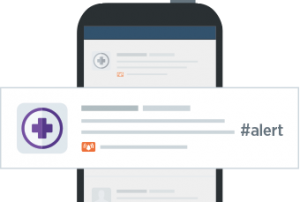 What? This is an alert that contains vital real-time information during a fast moving emergency. Since this feature is intended for crisis, disaster, and emergency communications, these alerts consist of:
What? This is an alert that contains vital real-time information during a fast moving emergency. Since this feature is intended for crisis, disaster, and emergency communications, these alerts consist of:
- Warnings of imminent dangers
- Preventive instructions
- Evacuation directions
- Urgent safety alerts
- Information on access to essential resources
- Information on critical transit and utility outages
- Crowd and misinformation management.
- Who? Only these groups are authorized to send an alert:
- Law enforcement
- Public safety agencies
- Emergency management agencies
- City and municipal governments
- County and regional agencies
- Select state, federal, and nation agencies and NGOs
- When? Twitter Alerts are used when traditional ways of communication are not available. Such emergencies may include:
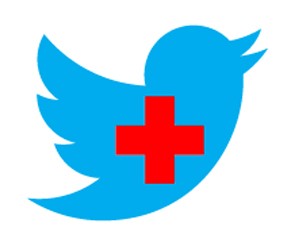 Natural disasters
Natural disasters- Severe weather
- Biological incidents
- Chemical or hazardous materials emergencies
- Nuclear
- Radiological incidents
- Explosions
- Food and agricultural incidents
- Cyber incidents
- Terrorism incidents
- Crime
- Major transportation incidents
- Where? Twitter Alerts send as SMS notifications. Also, an orange bell displays next to alerts on your timeline.
Think your organization qualifies? Complete the Twitter Alert Enrollment Form
How do I get Twitter alerts? Twitter Alert Setup
Ways Twitter responded to Paris Attacks:
- Use of hastags
- #PorteOuverte – Translates to Open Doors. This means you need a safe place to stay or you have a safe place (with open doors).
- #PrayForParis – Used to show support for Paris
- #RechercheParis – Translates to Search Paris. Friends and loved ones used this to find each other.
Airbnb Disaster Relief Program
 As a result of Hurricane Sandy in October 2012, many people in New York opened their doors to stranded individuals.
As a result of Hurricane Sandy in October 2012, many people in New York opened their doors to stranded individuals.
Airbnb, the unique online rental listing company, wanted to do the same during a disaster. They eventually created their very own disaster relief program. Airbnb even partnered with local government agencies and disaster relief organizations to make this program as effective as possible.
How it works Airbnb first sends out emails to room hosts in affected areas asking if they are in a position help. Hosts may then choose whether or not to participate. Finally, participating hosts open their doors (for free) to help people affected by the disaster.
- Airbnb still offers 12/7 customer support, trust & safety tools, host guarantee and all other services.
- Airbnb also uses their network to provide disaster information to the guests and hosts.
Ways Airbnb responded to Paris Attacks:
- Activated their disaster relief program and many hosts in the affected areas opened their doors to help keep people safe.
Other companies that helped during the crisis
Uber – Turned off their city price surge.
Verzion, T-Mobile, Sprint, AT&T, Google, and Skype – Made calling and texts from United States to France available for free





